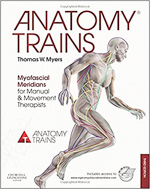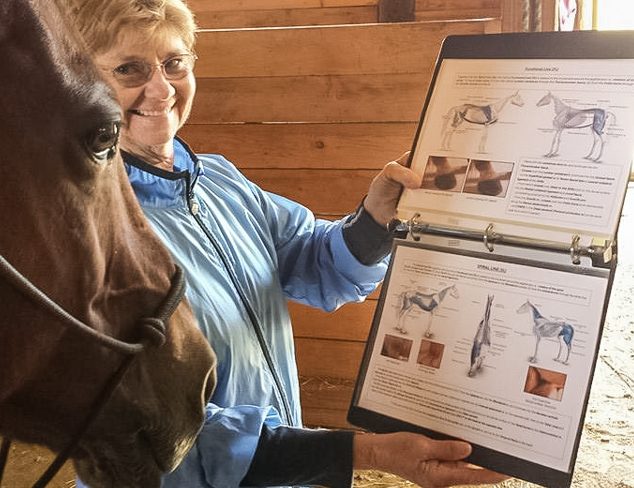Aiken, SC
info@equus-soma.com
Equus-Soma
Equine Osteology & Anatomy Learning Center
Waldoboro, ME
207-542-6132
What is Fascia?
Fascia is a body-wide fabric of connective tissue that extends from under the skin to deep within the body. It wraps around and permeates every muscle and organ, down to the cellular level. Fascia manifests in various physical forms depending on its function at any particular location. It ranges from flimsy and delicate (image at right) to thick and incredibly strong.
Fascia is vascularized, hydrated (see video at right) and endowed with an assortment of nerve types such as mechanoreceptors, proprioceptors, and nociceptors. This allows the fascia to transmit messages to the brain at lightning speed.
Research conducted over the past several years has begun to re-write the textbooks about muscle movement indicating that this process is much more involved than individual muscles moving in response to nervous input. In actuality, a network of connective tissue called "fascia" is responsible for coordinating muscle movement and precision.
The Fascial Web

In his book “Anatomy Trains”, internationally renowned human anatomist and instructor of structural integration, Thomas Myers describes 13 interconnecting lines or “meridians” of fascia that he identified from dissections of the human body. These meridians blend and connect with the body-wide fascial network, yet have unique characteristics, such as fiber direction on one plane, that distinguish them from the whole fascial web. Myers views the fascial meridians as “lines of pull” that run from head to toe & are instrumental in generating and orchestrating movement.
(NOTE: Myers uses the term “meridians” not in the sense of Traditional Chinese Medicine (TCM), but instead he views the fascial lines as meridians of latitude and longitude that girdle the earth. Many of his meridians and those of TCM do, however, coincide in many locations.)
Myers provides a much more detailed over-review of fascia, here, on his Anatomy Trains website. Also, take a moment to view the sidebar video in which Myers describes fascia and explains his concept of the "fascial meridians".
- Because of its importance in coordinating the musculoskeletal system in movement, the fascial network (or “web”) has become a primary focus in understanding human and equine biomechanics, as well as, health, fitness, and bodywork techniques. Current literature abounds with new research and information about everything “fascia”.
What has this got to do with horses?
Surprise... Surprise!!! The amazing Fascial Network is pervasive in our horses too!!
In 2015, veterinarian surgeons in Denmark* published their observations from dissections of 26 Icelandic horses. They described very similar fascial lines (meridians) to those found in humans by Myers. (*Elbønd, V.S. and Schultz, R.M. 2015. Medical Research Archives. Issue 3.)
fascial network - Equine Version
fascial network - Equine Version
In 2015, veterinarian surgeons in Denmark* published their observations from dissections of 26 Icelandic horses. They described very similar fascial lines (meridians) to those found in humans by Myers. (*Elbønd, V.S. and Schultz, R.M. 2015. Medical Research Archives. Issue 3.)
Fascial Web - Equine Version
Fascial Web - Equine Version
PHOTO CREDITS: The majority of images used on this website are property of Equus-Soma (Pamela Blades Eckelbarger). Images of me taken at Presentations are provided courtesy of Helen Peppe and other attending participants (thank you!!). Images on the About page of myself competing with Irish are courtesy of Flatlandsfoto. Images of skeletons in the banners are from Muybridge 1881.
November through July
1165 Shaws Fork Rd.
Aiken, SC 29805Equus-Soma
Equine Osteology & Anatomy Learning Center
Pamela Blades Eckelbarger M.S. Zoology
eqsoma71@gmail.com
(207) 542-61322024 ©ALL RIGHTS RESERVED
August through October
190 Horscents Ln.
Waldoboro, ME 04572


